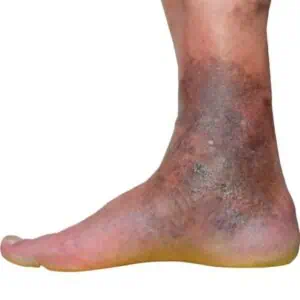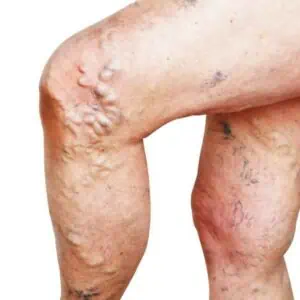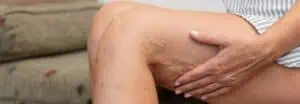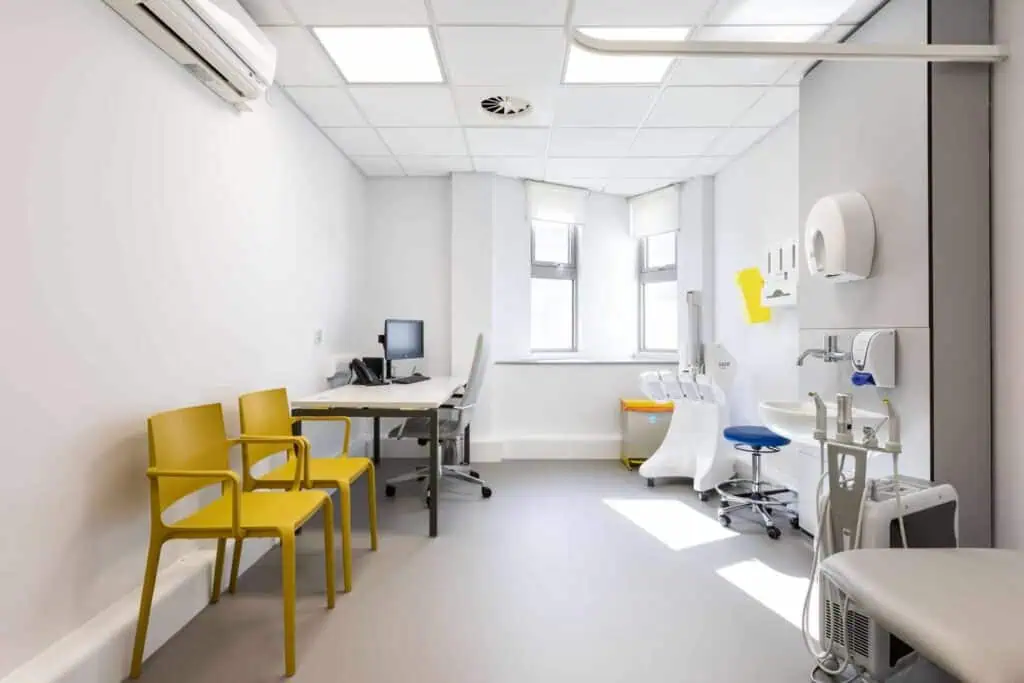Varicose Disease Awareness Month focuses on raising awareness about varicose veins, a common but often ignored condition affecting millions globally. This September, we’re highlighting the importance of early detection, available treatments and lifestyle changes to effectively manage varicose veins. By increasing awareness, we aim to encourage individuals to prioritise their vein health and seek professional advice on the first signs of symptoms, enhancing their well-being and quality of life. Whether you’re a health enthusiast or simply seeking knowledge to address your own symptoms, you’ll find valuable insights here.
What are Varicose Veins?
Often characterised by a lumpy, twisted appearance and a blue or dark purple colour, varicose veins are more than just a cosmetic annoyance. While common symptoms include tired, heavy legs and swollen ankles and feet, varicose veins can lead to high discomfort through throbbing pain and nighttime muscle cramps.




Understanding the Causes of Varicose Veins
Their origins lie in faulty valves within the veins. When these valves fail to close properly, blood flows backward and pools, causing the veins to expand. Several factors can escalate the risk of developing varicose veins, including age, pregnancy, prolonged standing and being overweight. It’s not merely about aesthetics; these twisted vessels can sometimes alert you to circulatory problems lurking beneath your skin.
When to Worry About Varicose Veins?
While it’s easy to dismiss varicose veins as merely unsightly, there are circumstances under which they can pose more serious risks. Skin ulcers, blood clots and chronic venous insufficiency are potential complications. Recognising the signs that need medical attention is vital in preventing more severe outcomes.
How to Treat Varicose Veins?
Sclerotherapy
Sclerotherapy is a medical procedure used to treat varicose veins and spider veins. During the procedure, a solution is injected directly into the affected veins. This solution, typically a saline or foam-based compound, irritates the lining of the blood vessels, causing them to collapse and eventually be reabsorbed by the body. The treated veins fade from view over time, usually within a few weeks.
The benefits of sclerotherapy are notable; it is minimally invasive, can be performed in a doctor’s office, and generally requires no anesthesia. It is highly effective for small to medium-sized varicose veins and spider veins, often yielding significant improvement after just one session, though multiple sessions may be necessary for optimal results.
EVLA (Endovenous Laser Ablation)
Endovenous Laser Ablation (EVLA) is a minimally invasive procedure used to treat varicose veins. During the procedure, a thin laser fiber is inserted into the affected vein through a small incision. The laser emits targeted heat, which causes the vein walls to collapse and seal shut. Over time, the treated vein is absorbed by the body, and blood flow is naturally redirected to healthier veins.
The benefits of EVLA are significant; it is a highly effective treatment for larger varicose veins, offering a quick recovery time and minimal discomfort. Most patients can return to their normal activities within a day or two. The procedure is typically performed under local anesthesia, reducing the risks associated with general anesthesia. Additionally, EVLA boasts a high success rate with long-lasting results, making it a preferred option for many patients.
How to Prevent Varicose Veins?
Seeking Professional Help
Varicose veins, while aesthetically displeasing for some, can also cause physical discomfort and, in severe instances, lead to ulcers or blood clots, posing a significant health risk. Currently, individuals seeking varicose vein treatment through the NHS may experience delays due to a backlog. Immediate treatment is crucial for those in need, but it’s important to consider the financial implications of prompt care. Treating varicose veins can be costly, and the NHS must distribute its resources equitably across all patients.
Fortunately, private clinics offer timely options. In the past, treatments included surgery or sclerotherapy, both invasive and potentially resulting in significant side effects. Stratum Clinics, however, provide laser treatments as an efficient alternative. Laser treatments use a specially designed laser to target and eliminate problematic veins. The process is quick, minimally painful and doesn’t leave scars or damage surrounding tissue. Compared to surgery or sclerotherapy, laser treatment has fewer risks of complications and requires minimal recovery time.
If you’re considering treatment for varicose veins, consult a dermatologist to determine what is the right choice for you.
Varicose Vein Clinics in Cheltenham
We hope this dissection of varicose veins – from their origins to their management – has provided you with the knowledge to confidently approach this common condition. Remember, whether seeking varicose vein treatment or guidance on when to worry about varicose veins, your proactive steps today build the foundation for healthier legs tomorrow. With the right treatments, lifestyle adaptations and support, you can address varicose vein removal optimistically and safeguard your vascular health.
Should you have any concerns about your veins, professional help is available at our Cheltenham clinic. Book your appointment online or call 0800 048 9230 today to reclaim comfort and confidence in your legs.



